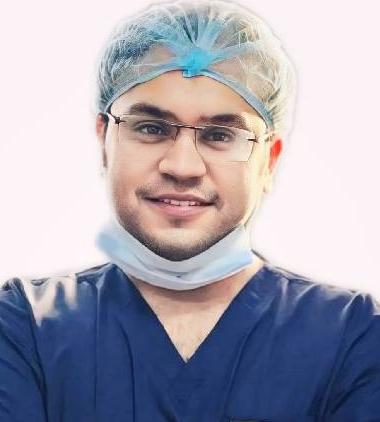Kyphoplasty Surgery: Meaning, Treatment Procedure, Recovery

Treatment Duration
45 Minutes
------ To ------60 Minutes
Treatment Cost
₹ 1,10,000
------ To ------₹ 4,00,000

Table of Contents
Kyphoplasty is a procedure to treat vertebral compression fractures (VCFs). This procedure is generally recommended for patients with painful osteoporotic compression fractures.
An interventional radiologist performs kyphoplasty surgery. The procedure takes about 45 to 60 minutes to complete. The procedure has a high success rate and most patients can resume a normal lifestyle within months.
| Surgery Name | Kyphoplasty |
| Alternative Name | Balloon Kyphoplasty |
| Diseases Treated | Osteoporotic compression fractures, Vertebral hemangioma, Injury in the spine |
| Benefits of the Surgery | Restores vertebral body height, Reduction in back pain, Corrects deformity in the vertebral column, Improvement in mobility |
| Treated by | Interventional Radiologist |
You can check Kyphoplasty Surgery Cost here.
What is Kyphoplasty?
Kyphoplasty is a procedure to treat vertebral compression fractures (VCFs). In a vertebral compression fracture, a part or all of the spine bone compresses or collapses. The vertebrae collapse causes the spine to shorten and curve forward, resulting in pain and a kyphotic (round back) deformity.
The procedure is similar to vertebroplasty (injects bone cement in the backbone) but uses special balloons to create spaces within the vertebrae. This is why the procedure is also known as balloon kyphoplasty.
Anatomy and Physiology of the Vertebral Column
The spine is one of the most important body parts as it is responsible for various functions, including balance and movement.
- The spine is composed of 33 bones called vertebrae.
- These bones are divided into the cervical, thoracic, and lumbar spine sections, plus two sections of naturally fused vertebrae - the sacrum and coccyx bones.
- The cervical section consists of the top seven vertebrae, C1 to C7.
- The thoracic section is located at the chest level, and the vertebrae in this section are labelled T1 to T12.
- The lumbar spine is between the thoracic vertebrae and the sacrum, with five vertebrae labelled L1 to L5.
- The sacrum is situated at the base of the spine with its five vertebrae, S1 to S5, fused together.
- The coccyx lies beneath the sacrum with four vertebrae fused together.
Expert Doctors (10)
NABH Accredited Hospitals (10)


Conditions treated with Kyphoplasty
Kyphoplasty is generally performed to treat painful osteoporotic compression fractures in the spine. However, kyphoplasty also helps treat the below-mentioned conditions.
- Vertebral hemangioma cause vertebral collapse or neurologic deficit due to extension into the spinal cord.
- Pathologic compression fractures from metastases.
- Injury in the spine, leading to broken bones.
Who needs Kyphoplasty?
How is Kyphoplasty performed?
Kyphoplasty is an effective treatment to improve pain, mobility and deformity in the vertebral column. The procedure generally takes about 45 to 60 minutes to complete depending on the patient's age, medical condition of the patient and the complexity of the case. The procedure is done under local or general anaesthesia to keep the patient comfortable. A kyphoplasty procedure generally follows these steps:
- The patient will be made to lie on his/her stomach on the operating table in the OT room.
- An anesthesiologist will start an IV line for fluids and medications in the patient's arms or hands.
- He/she will administer medicine through the IV to help relax and relieve the patient's pain or give general anaesthesia to put the patient to sleep.
- The surgeon will then check the vital measures of the patient such as the heart rate, oxygen concentration, and blood pressure throughout the procedure.
- The surgical site will be cleaned and draped with an antiseptic cloth.
- The surgeon will then use fluoroscopy (a type of X-ray) to insert a hollow needle, known as a trocar, through the skin and back muscles into the vertebrae.
- Once the needle is in place, he/she will insert a balloon in the vertebrae via the trocar.
- The surgeon will inflate the balloon to help the vertebra regain its normal shape.
- While checking the X-rays, he/she will inject the bone cement into the space opened by the inflated balloon.
- The doctor will remove the trocar with no need for stitches.
- Once the procedure is completed, he/she will apply a bandage to the wound.
Kyphoplasty is a similar procedure to vertebroplasty, where the doctor injects bone cement into the backbones that have cracked or broken. The cement helps stabilise the fracture and support your spine. Both procedures are often performed together.
What to expect before and on the day of Kyphoplasty?
Kyphoplasty surgery generally requires the patient to stay in the hospital for a few days, depending on his or her health condition. To prepare for the day of surgery, the patient must consider the following things:
Before Kyphoplasty
- Apart from discussing the medical history, the doctor will perform a physical exam and certain blood tests.
- The patient will undergo spine X-rays or MRI to locate the fractures.
- The patient must inform the doctor about the medications (prescribed and over-the-counter) and herbal supplements that he/she is taking.
- The doctor will ask the patient about any recent illnesses and allergies the patient may have.
- The patient will be asked to stop taking nonsteroidal anti-inflammatory drugs and blood-thinning medications such as aspirin.
- The doctor will inform the patient to stop eating or drinking three hours before the procedure.
- The doctor will explain the procedure, estimated cost, and insurance formalities.
- The patient will be given instructions for the day of the surgery.
On the day of Kyphoplasty
- The patient must reach the hospital before the scheduled time of surgery.
- The patient will be asked to sign a consent form permitting the procedure.
- The team will instruct the patient to remove all jewellery pieces and change the clothes into a hospital gown.
- The doctor will record the patient's last meal.
- The anaesthesiologist will monitor the patient's vitals.
- The team will shift the patient to the OT room.
What to expect after Kyphoplasty?
The following things can be expected after the kyphoplasty procedure:
The recovery process at the hospital
- After the procedure, the team will shift the patient to the recovery room for some time.
- The patient may notice pain relief right after the procedure.
- The patient will be able to walk in a couple of hours.
- It is an outpatient procedure, i.e., the patient can typically go home the same day.
- The doctor will give the patient specific home-care instructions before he/she goes home.
- The doctor might suggest medications, vitamins, and minerals to strengthen the bones and prevent further spinal fractures.
- The patient would need someone to drive him/her home after kyphoplasty.
Recovery process/expectation after hospital discharge
- Instructions provided by the doctor must follow at home.
- The patient may experience some soreness where the needle was inserted. However, it will not last more than a few days.
- The patient must keep the bandage in place for at least two days.
- The patient can take a shower instead of a bath with the wound area covered.
- The patient can return to normal activities but should avoid engaging in strenuous activities like heavy lifting for at least six weeks post-procedure.
- The patient must avoid drinking alcohol as it increases the risk of bleeding.
- Pain caused by the procedure may last up to two to three days.
- The patient must apply ice to the wound for 10 to 20 minutes if he/she experiences pain or inflammation in the area where the needle was inserted.
- The doctor may recommend physical therapy and walking to restore mobility and strength while managing the pain.
First follow-up appointment
- The patient will have the first follow-up appointment within 10 to 12 days after the procedure.
- The doctor will examine the surgical site by conducting an X-ray during this visit and physically manipulate the spine to evaluate your recovery.
- The doctor might also change the medication or advise the patient to continue with the previous medication for some more time, depending on the condition and recovery of the surgical area.
- The patient will also be informed regarding future visits to examine if the implant is in place and functioning properly.
Benefits of Kyphoplasty
Kyphoplasty is known to be an effective solution to provide pain relief with improved mobility within 48 hours. The results achieved depend on the duration in which the fracture is repaired. The sooner a fracture is repaired, the better the results are seen.The benefits of kyphoplasty include:
- Restores Vertebral Body height
- Corrects deformity in the vertebral column
- Reduction in backpain
- Significant improvement in mobility and daily activities
- The procedure is minimally invasive and involves no major cuts or wound
Risks and complications of Kyphoplasty
Like any other surgery, the kyphoplasty procedure also has some potential risks and complications, such as:
- Infection
- Increased back pain
- Bleeding
- Numbness, tingling and even paralysis due to damage to the spinal cord or nerves.
- Allergic reactions to medicines or chemicals used with X-rays
- Bone cement leaking into the surrounding area can cause nerve pain (Radiculopathy)
- Development of additional fractures in the spine specifically in case of osteoporosis.
When is consultation with the doctor needed?
The patient must consult the doctor immediately if he or she experiences:
- High body temperature of more than 101.5 degrees C
- Excessive bleeding
- Infection, redness or swelling
- Numbness or tingling
- Worsening pain
- Difficulty in walking
- Bladder or bowel incontinence
Risks of delayed Kyphoplasty
If kyphoplasty is not performed and the compression fractures are left untreated, it can lead to:
- The collapse of the fractured vertebrae
- Limited mobility, leading to blood clots in legs
- Deformity
- Permanent spinal cord injury
- Nerve damage
- Paralysis
Cost of Kyphoplasty
The cost of Kyphoplasty ranges from ₹1,10,000 to ₹4,00,000. The cost varies based on the following factors:
- Age of the patient
- The type of procedure done
- The technique and equipment used
- The medical condition of the patient
- The type of hospital facility availed - individual room or shared.
| Procedure Name | Cost Value |
| Kyphoplasty | ₹1,10,000 to ₹4,00,000 |
Frequently Asked Questions (FAQ)
What are the myths versus facts about kyphoplasty?
- Myth: Kyphoplasty can cause an adjacent level fracture.
Fact: Not true! Scientific studies have shown that kyphoplasty decreases the risk of an adjacent-level fracture. Since the procedure restores the spine to its normal height and decreases muscle spasms, there is less pressure on other vertebrae. Even with a large cement leak in the disc, the risk of a second fracture is very uncommon.
More Treatment options
Last Updated on: 11 June 2024
Author
HexaHealth Care Team
HexaHealth Care Team brings you medical content covering many important conditions, procedures falling under different medical specialities. The content published is thoroughly reviewed by our panel of qualified doctors for its accuracy and relevance.






















